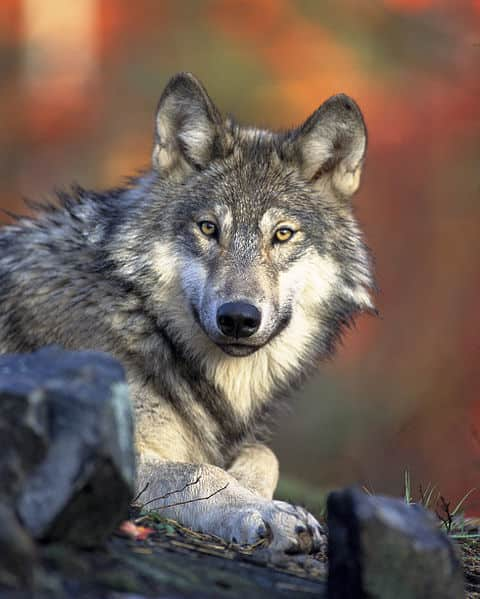USFWS Prepares to Delist Gray Wolves in Lower 48
OutdoorHub Reporters 04.29.13

A document obtained by the LA Times heralds a planned ruling that could eliminate protection for all gray wolves in the Lower 48 states with a possible exception for the Mexican wolf, a subspecies, in Arizona and New Mexico. The move will punctuate a decades-long recovery effort to restore the species, returning thousands of the animal to portions of their native range. Once removed from federal protections, decisions concerning the control and management of the animals will be handed over to individual states.
Conservationists have done much to restore the wolf populations since the species teetered on the brink of extinction in the 1930s. However, now the debate hinges on whether the wolf is recovered enough to garner a delisting from the endangered species list. Removing federal protections is a rare event for previously endangered animals and often signifies a major success. However, moving back into their former habitats have brought the wolves into conflict with humans, especially ranchers who are now noticing increased attacks on livestock. A management program is proposed by some states to help keep the wolf population in check.
Last year the federal government delisted the gray wolf for the Northern Rockies and Great Lakes region. Since then several states acted on feedback from farmers and hunters and began management programs, including Montana, Idaho, and Wyoming, with management proposals currently under consideration in Michigan. Mike Jimenez of the U.S Fish and Wildlife Service (USFWS) wolf program called the wolf restoration in the Northern Rockies a “huge success story” and that the agency will continue to monitor wolf populations in delisted states to make sure that species are not threatened.
While many scientists advocate returning the fate of the wolves back to the states, some argue that the plan comes too soon and is based on faulty reasoning.
“This is politics versus professional wildlife management,” said Jamie Rappaport Clark, a former USWFS director and now currently heading the non-profit organization Defenders of Wildlife. The service is saying, ‘We’re done. Game over. Whatever happens to wolves in the U.S. is a state thing.’ They are declaring victory long before science would tell them to do so.”
State agencies and hunters however, see a regulated hunting season as a tool to prevent wolf and human conflicts, as well as minimizing the predators’ effect on other wildlife. This is the view that the conservation group Rocky Mountain Elk Foundation (RMEF) holds.
“We applaud the move by the USFWS and we believe there is already an adequate population of gray wolves in the United States,” RMEF CEO David Allen told Outdoor Hub in an interview. “We believe it is the right decision by the Fish and Wildlife Service. The best method to manage the gray wolf population is by state wildlife agencies, just as they manage other wildlife. ”
Allen also points to the success of hunting seasons in the states where the wolves are already delisted.
“It’s clear to this date that regulated hunting and trapping is a viable tool to control the species,” he said. “It is also not decimating the gray wolves as some environmentalists have been claiming. There is no science to support that. Everything supports that states such as Montana and Idaho are adequately managing their populations.”
The draft rule is still under review and the agency will ultimately be seeking public comment before a decision is reached. The LA Times reports that a decision could be released as soon as the next several weeks.

